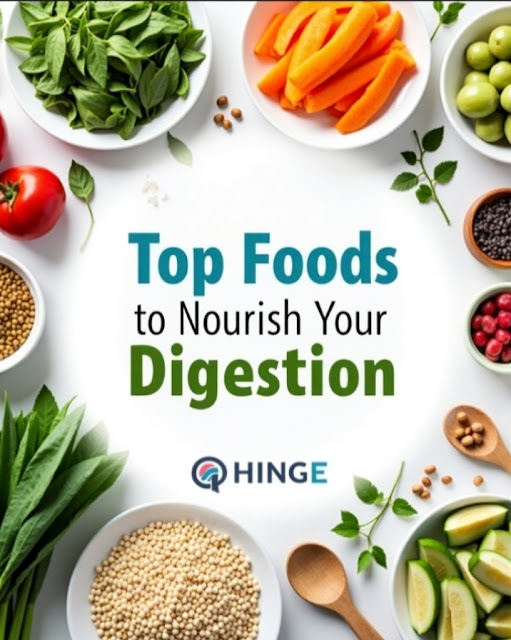Living with diabetes doesn't mean giving up delicious food. It means making smarter, more strategic choices that work *with* your body to manage blood sugar levels effectively. The right foods can be powerful allies, providing essential nutrients while minimizing glucose spikes and promoting overall health. Here’s a breakdown of the superstar foods to prioritize:
Core Principles First:
* Focus on Fiber: Slows digestion and sugar absorption, preventing blood sugar surges.
* Choose Complex Carbs: Opt for whole grains over refined ones (white bread, pasta, rice).
* Prioritize Lean Protein: Helps with satiety and has minimal impact on blood sugar.
* Embrace Healthy Fats: Improve heart health (crucial for diabetics) and slow carb absorption.
* Load Up on Non-Starchy Veggies: Packed with nutrients and fiber, very low in carbs.
* Mind Portions: Even healthy foods impact blood sugar if eaten in large quantities.
The Diabetes Superstar Food Groups:
1. Non-Starchy Vegetables (Fill Half Your Plate!):
* Why: Extremely low in calories and carbs, high in fiber, vitamins, minerals, and antioxidants.
* Stars: Leafy greens (spinach, kale, Swiss chard), broccoli, cauliflower, Brussels sprouts, asparagus, green beans, bell peppers, mushrooms, zucchini, tomatoes, cucumbers, celery, onions, eggplant.
* Tip: Enjoy them raw, steamed, roasted, grilled, or sautéed (use healthy oils). They add bulk and nutrients without spiking glucose.
2. Lean Protein Sources:
* Why: Essential for building and repairing tissues, promotes fullness, and has minimal direct impact on blood sugar.
* Stars:
* Poultry: Skinless chicken breast, turkey breast.
* Fish: Fatty fish rich in omega-3s (salmon, mackerel, sardines, trout, herring) and lean fish (cod, tilapia, halibut).
* Plant-Based: Tofu, tempeh, edamame, lentils, beans (black, kidney, pinto, chickpeas - note: these also contain carbs, but are high in fiber/protein).
* Eggs: A versatile and nutrient-dense option.
* Dairy: Low-fat or fat-free plain Greek yogurt (high protein, lower sugar than regular yogurt), cottage cheese.
* Tip: Bake, grill, poach, or steam instead of frying. Include protein with every meal and snack.
3. Healthy Fats:
* Why: Improve heart health, increase satiety, and help slow the absorption of carbohydrates.
* Stars: Avocados, nuts (almonds, walnuts, pistachios, pecans - watch portions), seeds (chia, flax, pumpkin, sunflower), olives, and healthy oils (extra virgin olive oil, avocado oil).
* Tip: Use oils for cooking and dressings. Add nuts/seeds to yogurt or salads. Enjoy avocado slices or guacamole. Remember, fats are calorie-dense, so portion control is key.
4. High-Fiber, Complex Carbohydrates (Choose Wisely & Control Portions):
* Why: Provide sustained energy and essential nutrients without the rapid blood sugar spike of refined carbs. The fiber content is critical.
* Stars:
* Whole Grains: Oats (steel-cut or rolled are best), quinoa, barley, brown rice, farro, bulgur, whole-wheat bread/pasta (check fiber content!).
* Legumes: Beans, lentils, chickpeas (excellent combo of fiber and protein).
* Starchy Vegetables (in moderation): Sweet potatoes (much better than white potatoes), pumpkin, winter squash (butternut, acorn), peas, corn. Pair with protein/fat.
* Tip: Always pair carbs with protein and/or healthy fat. Measure portions (use the plate method: ~1/4 plate carbs). Choose whole, unprocessed options.
5. Low-Sugar Fruits (Enjoy in Moderation):
* Why: Provide vitamins, minerals, antioxidants, and fiber. Choose lower-glycemic options and control portions.
* Stars: Berries (blueberries, strawberries, raspberries, blackberries - highest in fiber/antioxidants), apples (with skin), pears, oranges, grapefruit, peaches, cherries, kiwi.
* Tip: Enjoy whole fruit instead of juice (which lacks fiber). Pair with a handful of nuts or some plain yogurt for balance. Stick to one small serving per meal/snack.
Building Balanced Meals:
Use the "Plate Method" as a simple guide:
1. Half your plate: Non-starchy vegetables.
2. Quarter of your plate: Lean protein.
3. Quarter of your plate: High-fiber complex carbohydrate.
4. Add: A serving of healthy fat and/or a small serving of low-sugar fruit.
Crucial Considerations:
* Hydration is Key: Drink plenty of water throughout the day. Avoid sugary drinks (soda, sweet tea, juice) like the plague.
* Read Labels: Pay attention to serving sizes, total carbohydrates, fiber, and added sugars. Look for hidden sugars in sauces, dressings, and packaged foods.
* Cooking Methods Matter: Bake, broil, steam, grill, roast, or sauté instead of frying.
* Flavor Without Sugar: Use herbs, spices, garlic, lemon juice, lime juice, and vinegar liberally.
* Beware of "Diabetic" Foods: Many processed foods marketed as "sugar-free" or "diabetic-friendly" can still be high in unhealthy fats, calories, and carbs (like sugar alcohols which can cause digestive upset). Whole, unprocessed foods are always best.
* Alcohol: Consume sparingly and always with food, as it can cause hypoglycemia (low blood sugar). Consult your doctor.
* Individual Needs: There's no single perfect diet for everyone with diabetes. Work with your doctor or a registered dietitian to create a personalized meal plan.
------------------------------------------------------------
Take Control of Your Diabetes Management! Stay informed and empowered with
Click Here 👉[Sugar Defender] - a reliable and easy-to-use [Blood Glucose Monitor / Continuous Glucose Monitor]. Designed for comfort and accuracy, it helps you track trends and make confident daily decisions. Manage smarter, live better.
Click Here 👉 ( Sugar Defender)
Wish You A Happy And Healthy Life 👍













